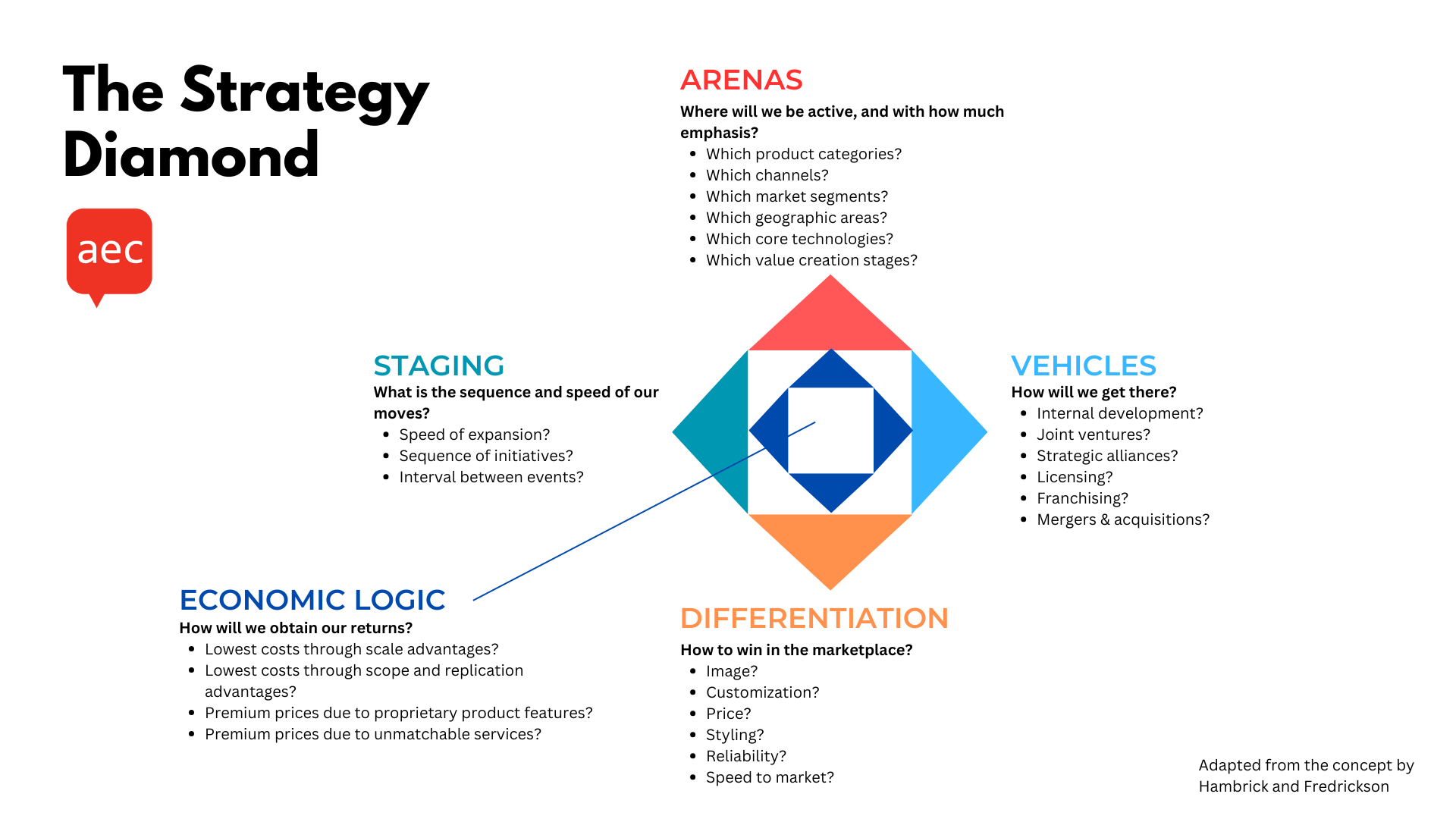Does your AEC company have a live strategy? Many companies claim to have one, but it fails to answer some basic questions.
What is strategy?
There is no single, all-encompassing definition of strategy. The Economist noted in its March 1993 issue, “Nobody really knows what strategy is.”
Professor Henry Mintzberg outlined five different ways to define strategy, known as the 5 Ps of Strategy:
- Plan – A deliberate course of action to achieve a specific goal. It involves systematic planning, setting objectives, and formulating steps to accomplish them.
- Ploy – A tactical maneuver aimed at outwitting competitors or other stakeholders. This could involve strategic deception, market positioning, or competitive moves.
- Pattern – A consistent behavior, whether intended or emergent over time. Even if a company doesn’t explicitly plan a strategy, its repeated actions can define its strategic direction.
- Position – A place in the market or industry relative to competitors. It focuses on how an organization differentiates itself, where it competes, and its value proposition.
- Perspective – An organizational mindset or culture that shapes decision-making. This is more about the company’s vision, values, and way of thinking rather than specific actions or plans.
Mintzberg’s 5 Ps of Strategy emphasizes that strategy is not just a single plan but can emerge from various organizational perspectives and actions.
The word strategy comes from the ancient Greek for “general,” specifically for a general on campaign on the field. Cynthia A. Montgomery refers to this definition in her book The Strategist. She stated, “In business, strategy is a company’s campaign in the marketplace: the domain in which it competes, and what it wants to accomplish.”
Why do you need a strategy?
Whatever your definition of strategy is, it has little value if it does not offer you the backbone and guidance you need daily when making decisions. When you have a solid strategy, you know whether to submit a specific bid, start a new client relationship, or expand to new business areas.
If you have defined your company’s strategy in writing, closely examine the document. If your strategy is more like a mindset, this might be the time to write it down and be more explicit about your priorities, goals, and guiding principles.
A well-articulated strategy helps align your team, clarify decision-making, and ensure everyone moves in the same direction. Otherwise, you risk drifting into reactive decision-making, missing opportunities, or investing resources in initiatives that don’t serve your long-term vision. Strategy is not just a document—it’s a commitment to a deliberate and focused way of doing business.
Do you really have a strategy?
See if you can find answers to the following questions from your strategy. These questions are based on D. C. Hambrick’s and J. W. Fredrickson’s excellent article “Are you sure you have a strategy?” published in Academy of Management Executive, 2005, Vol. 19, No. 4.

1) What are your arenas—where are you active? These include market segments, geographic areas, project types, core technologies, etc. For example, your arena could be health care facilities on the East Coast or renovation of demanding water-crossing bridges and railway bridges. If you try to be everything to everybody, you’ll likely fail.
2) What differentiators allow you to win in our target arenas? Some alternative differentiators include unique expertise, execution speed, superior cost-efficiency, or customer intimacy. In today’s hectic business environment, creating a sustainable differentiator is difficult.
3) What are your vehicles to achieve success? They could be—among others—internal development programs, joint ventures, licensing or franchising programs, alliances, or acquisitions.
4) What is your staging and pricing? What is the sequence and speed of strategic moves? Do you serve small clients and gradually try to move into larger projects? Are you local but plan to be national or international? Some companies want to move one step at a time; others want to leapfrog to a new level.
5) What is your economic logic? How do you tie all the pieces together to satisfy your key stakeholders? For example, you could offer the lowest price through scale, scope, and replication advantages. Alternatively, you might have premium prices due to unmatchable service or proprietary service features
If your strategy answers these fundamental questions unambiguously, you should be proud. I’ve seen too many strategies fail to pass this simple test.
If you are uncertain about these questions, now is an excellent time to review your strategy closely.
View the original article and our Inspiration here


Leave a Reply